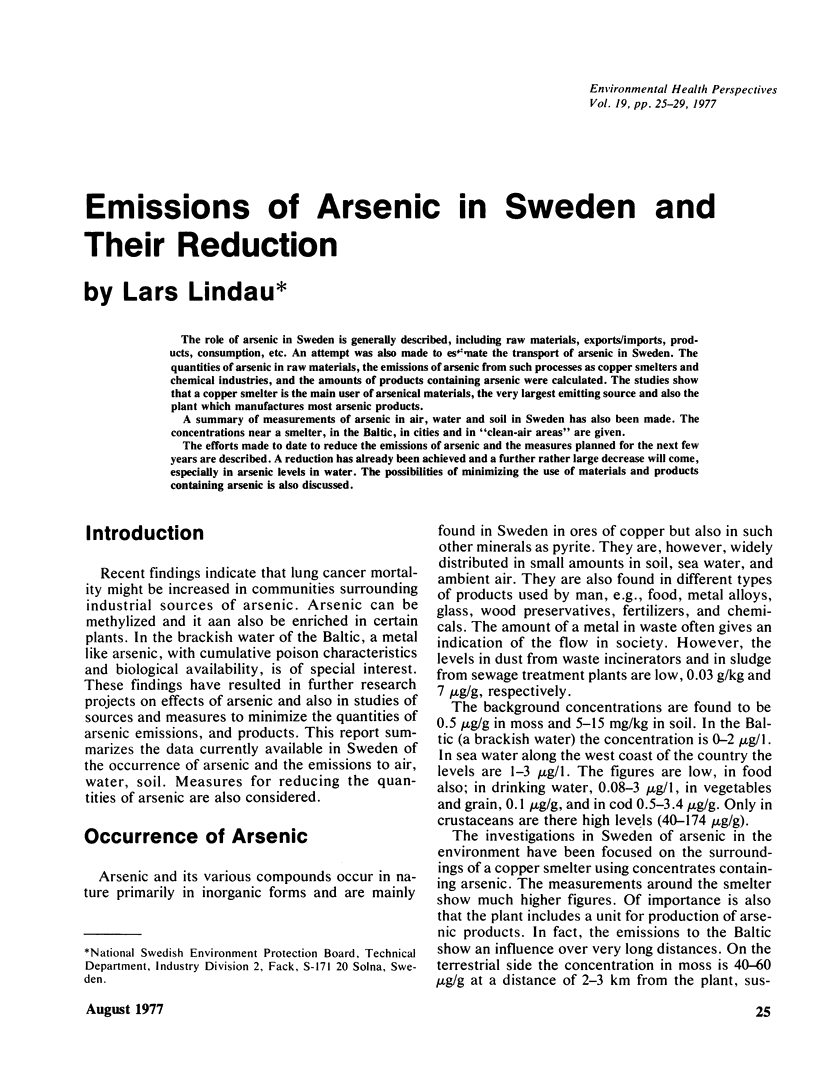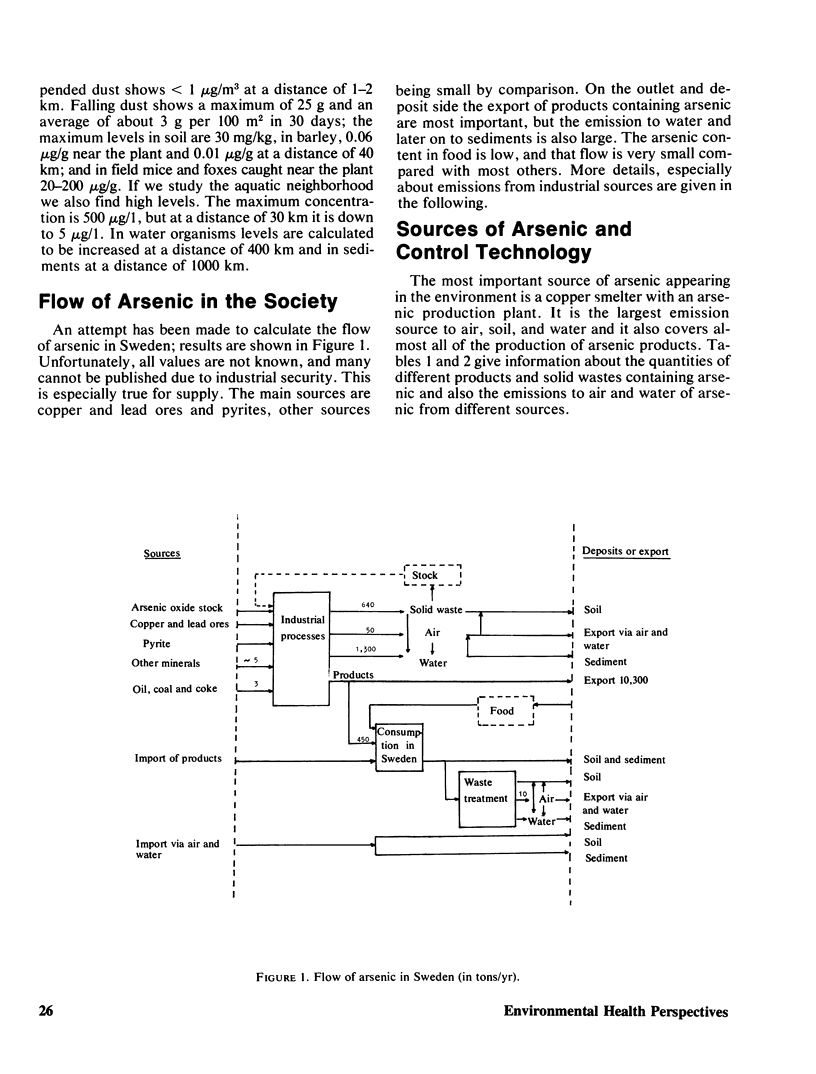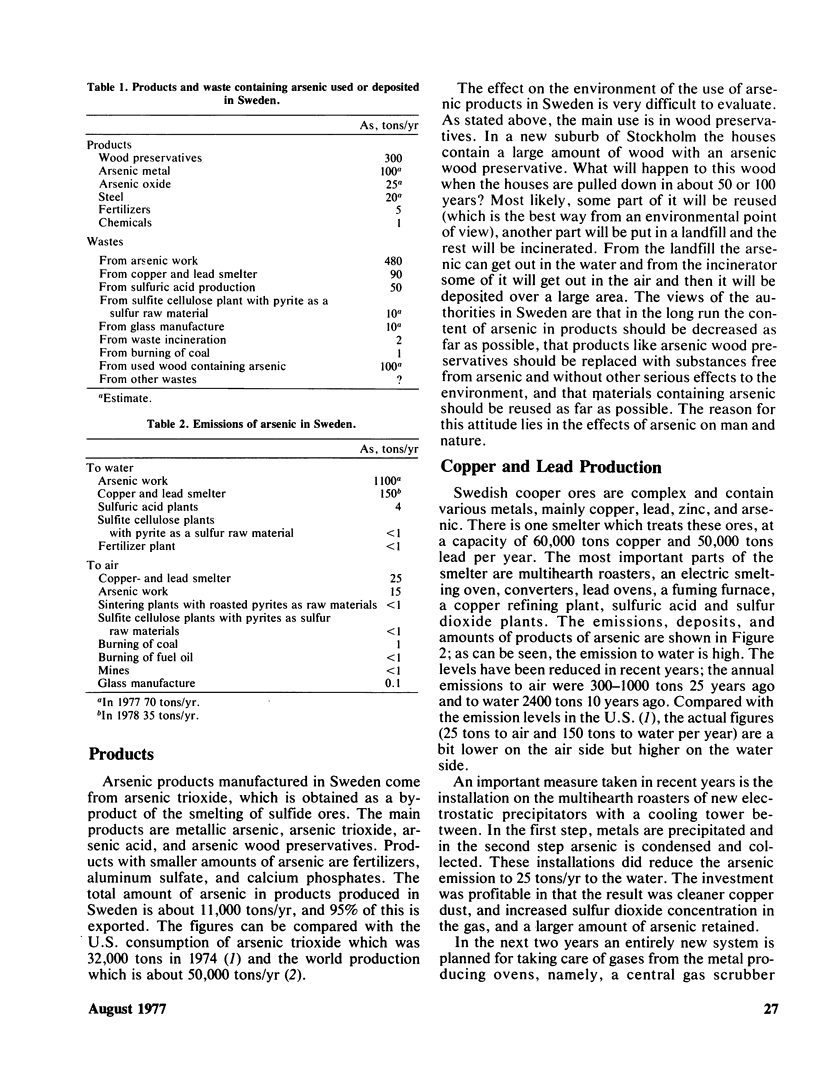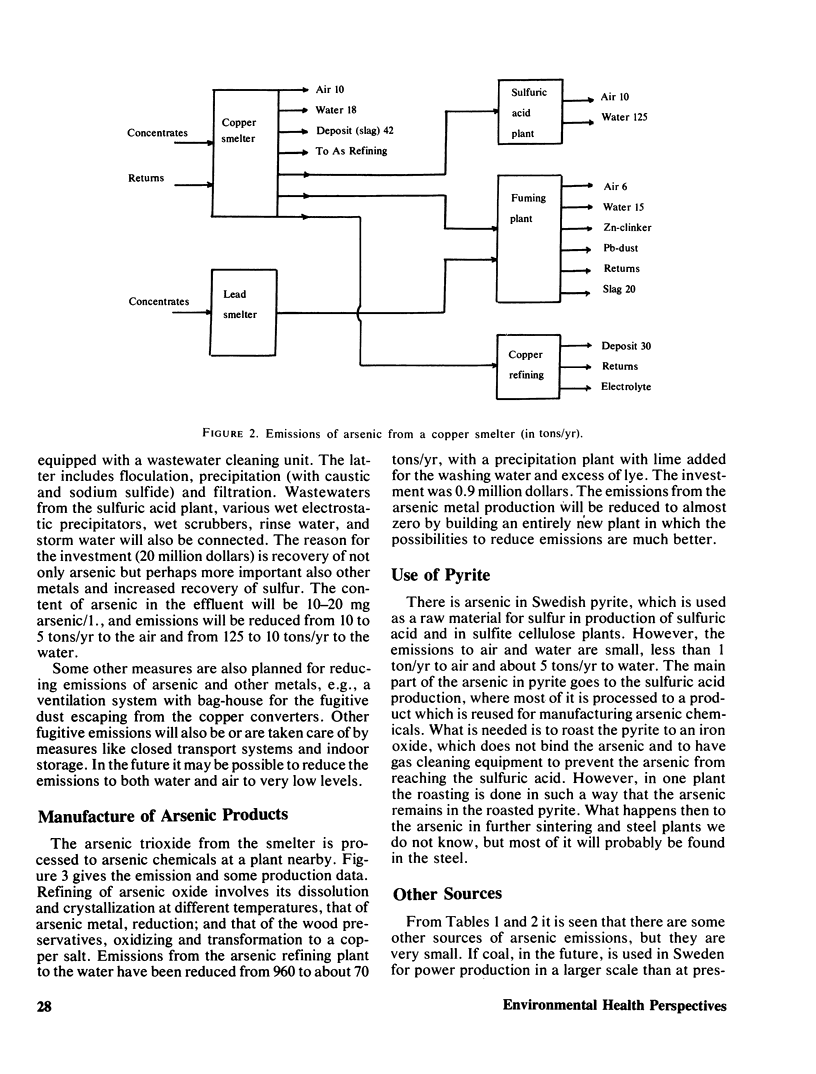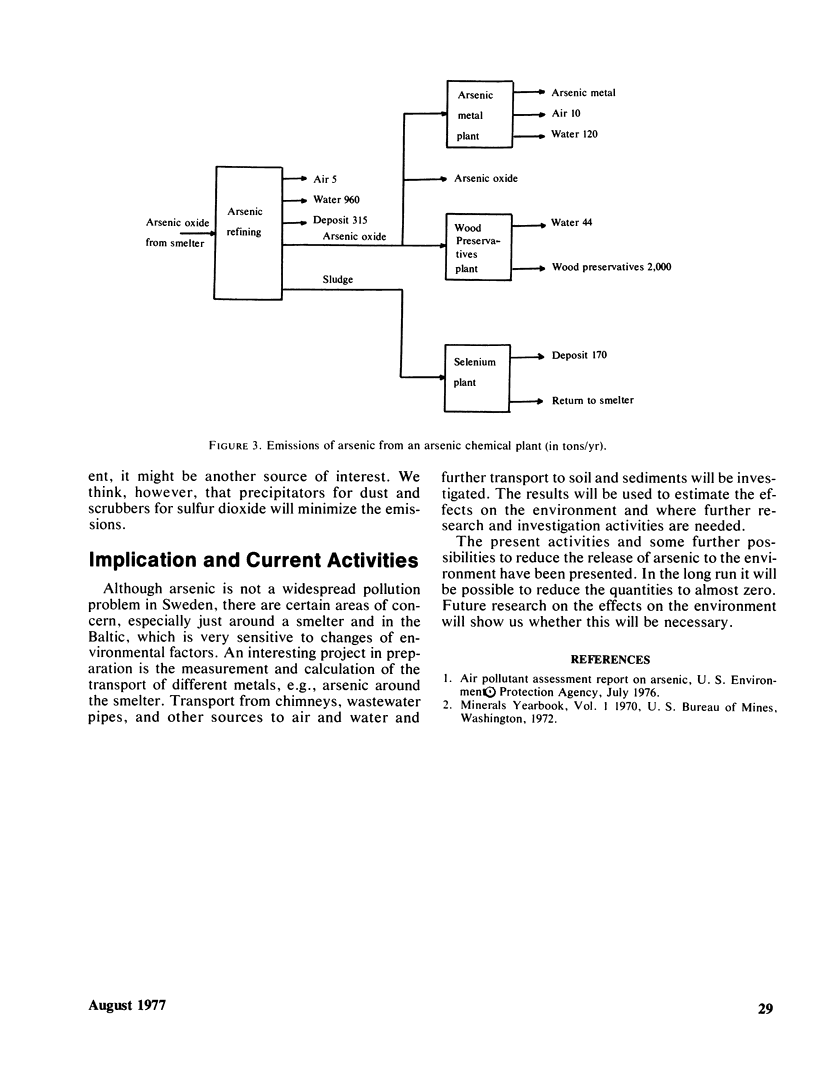Abstract
The role of arsenic in Sweden is generally described, including raw materials, exports/imports, products, consumption, etc. An attempt was also made to estimate the transport of arsenic in Sweden. The quantities of arsenic in raw materials, the emissions of arsenic from such processes as copper smelters and chemical industries, and the amounts of products containing arsenic were calculated. The studies show that a copper smelter is the main user of arsenical materials, the very largest emitting source and also the plant which manufacturers most arsenic products. A summary of measurements of arsenic in air, water and soil in Sweden has also been made. The concentrations near a smelter, in the Baltic, in cities and in "clean-air areas" are given. The efforts made to date to reduce the emissions of arsenic and the measures planned for the next few years are described. A reduction has already been achieved and a further rather large decrease will come, especially in arsenic levels in water. The possibilities of minimizing the use of materials and products containing arsenic is also discussed.
Full text
PDF